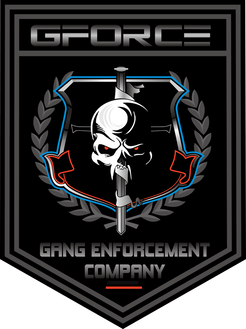GANG COMMUNICATION
Gang members communicate in many different ways utilizing oral and nonverbal methods of communication. Many local gangs will adopt signs, symbols and colors to differentiate themselves from other gangs, confirm members, instill pride, communicate with allies and intimidate their rivals. While street slang is the most apparent, gangs will use signs, symbols and colors displayed through the use of graffiti, tattoos, clothing, bandannas, caps, shoes, and jewelry to show affiliation with a particular gang and use hand signs to communicate to each other and those in the community.
"If you need assistance deciphering a code that you have intercepted, contact Gang Command for assistance.”
- RUSTY KEEBLE
We have many on file and no two are 100% the same. When you find coded writings, graffiti, etc. it is important to document the symbols used to represent a specific letter and use that to develop the (a-z symbol-to-letter) "key" and keep it on file - even if it is incomplete. Below are just random samples.
CODE TYPES
Below are a few samples of the different types of gang codes and communications. There is no limit to the number of types of gang codes as they can be created at any time in any style using any signs, symbols, numbers, letters, etc by the creator. Every coded message should be treated as sensitive and immediate for decoding as you never know the intent of the message. If it is written in codes - there is a reason they do not want anyone but the intended recipient to be able to read it.
The centuries old Masonic Cipher uses two tic-tac-toe diagrams and two X patterns to represent the letters of the alphabet. Letters are enciphered using the patterns formed by the intersecting lines and dots
The name Bob Smith would be as follows
A variation of the Masonic Cipher used to encrypt numbers is the Tic-Tac-Toe Cipher. Using this pattern, each number can be enciphered with the character that is formed by the intersecting lines surrounding each number. The 0 is enciphered using an X.







